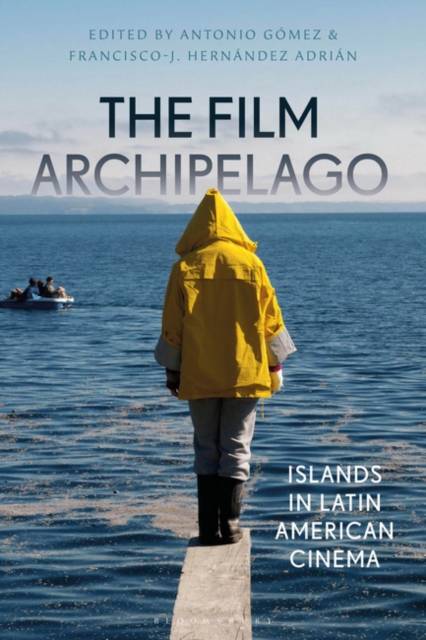
Je cadeautjes zeker op tijd in huis hebben voor de feestdagen? Kom langs in onze winkels en vind het perfecte geschenk!
- Afhalen na 1 uur in een winkel met voorraad
- Gratis thuislevering in België vanaf € 30
- Ruim aanbod met 7 miljoen producten
Je cadeautjes zeker op tijd in huis hebben voor de feestdagen? Kom langs in onze winkels en vind het perfecte geschenk!
- Afhalen na 1 uur in een winkel met voorraad
- Gratis thuislevering in België vanaf € 30
- Ruim aanbod met 7 miljoen producten
Zoeken
€ 67,95
+ 135 punten
Omschrijving
How do the islands and archipelagos of the New World figure in Latin American cinema? Comprising 15 essays and a critical introduction, The Film Archipelago: Islands in Latin American Cinema addresses this question by examining a series of intersections between insular spaces and filmmaking in Latin America. The volume brings together international scholars and filmmakers to consider a diverse corpus of films about islands, films that take place on islands, films produced in islands, and films that problematise islands.
The book explores a diverse range of films that extend from the Chilean documentaries of Patricio Guzmán to work on the Malvinas/Falkland Islands, and films by Argentine directors Gustavo Fontán and Lucrecia Martel. Chapters focus on Rapa Nui (Easter Island), the Mexican Islas Marías, and the Panamanian Caribbean; on ecocritical, environmental and film historical aspects of Brazilian and Argentine river islands; and on Cuban, Guadeloupean, Haitian, and Puerto Rican contexts.
The Film Archipelagoargues that the islands and archipelagos of Latin American cinema constitute a critically interesting, analytically complex, and historically suggestive angle to explore issues of marginality and peripherality, remoteness and isolation, and fragility and dependency. As a whole, the collection demonstrates to what extent the combined insular and archipelagic lens can re-frame and re-figure both longstanding and recent discussions on the spaces of Latin American cinema.
The book explores a diverse range of films that extend from the Chilean documentaries of Patricio Guzmán to work on the Malvinas/Falkland Islands, and films by Argentine directors Gustavo Fontán and Lucrecia Martel. Chapters focus on Rapa Nui (Easter Island), the Mexican Islas Marías, and the Panamanian Caribbean; on ecocritical, environmental and film historical aspects of Brazilian and Argentine river islands; and on Cuban, Guadeloupean, Haitian, and Puerto Rican contexts.
The Film Archipelagoargues that the islands and archipelagos of Latin American cinema constitute a critically interesting, analytically complex, and historically suggestive angle to explore issues of marginality and peripherality, remoteness and isolation, and fragility and dependency. As a whole, the collection demonstrates to what extent the combined insular and archipelagic lens can re-frame and re-figure both longstanding and recent discussions on the spaces of Latin American cinema.
Specificaties
Betrokkenen
- Uitgeverij:
Inhoud
- Aantal bladzijden:
- 360
- Taal:
- Engels
- Reeks:
Eigenschappen
- Productcode (EAN):
- 9781350281752
- Verschijningsdatum:
- 27/07/2023
- Uitvoering:
- Paperback
- Formaat:
- Trade paperback (VS)
- Afmetingen:
- 156 mm x 234 mm
- Gewicht:
- 494 g

Alleen bij Standaard Boekhandel
+ 135 punten op je klantenkaart van Standaard Boekhandel
Beoordelingen
We publiceren alleen reviews die voldoen aan de voorwaarden voor reviews. Bekijk onze voorwaarden voor reviews.








